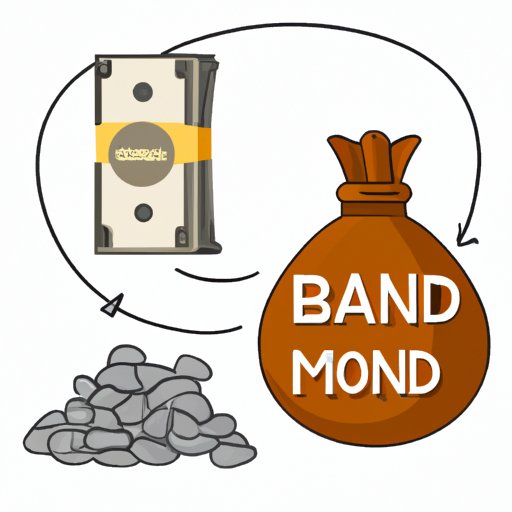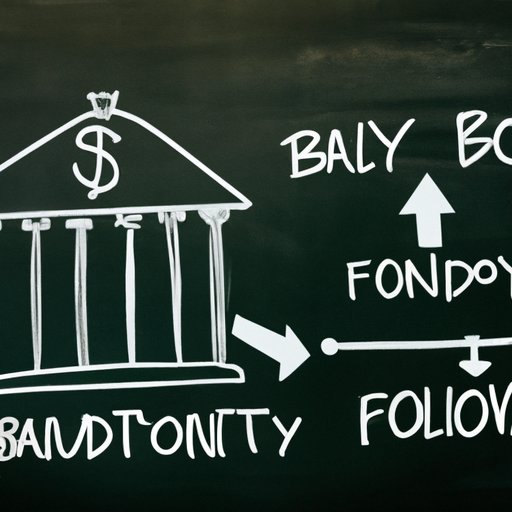
Introduction
Have you ever wondered what happens to your bail money once it is paid? Bail can be a confusing process, and understanding if and how you can get your money back is crucial. This guide will explain everything you need to know about bail refunds and the process for claiming your funds.
The Ultimate Guide to Bail: Everything You Need to Know About Getting Your Money Back
Before we dive into the specifics of bail refunds, it’s important to understand what bail is and its purpose. Bail is a sum of money paid to the court as a guarantee that the defendant will appear in court for their trial. The court holds this money until the case is resolved.
There are two types of bail: cash bail and bail bonds. Cash bail is paid directly to the court, often in full. Bail bonds are paid to a bail bondsman, who pays the court on the defendant’s behalf in exchange for a fee.
The purpose of bail is to ensure that the defendant appears in court, and to provide a financial incentive for them to do so. Bail also serves as a way for the court to manage the flow of cases, as it allows defendants to be released from jail while awaiting trial.
The bail process can be confusing, especially for those who have never had to post bail before. After bail is paid, the defendant is released from custody and must follow certain conditions, such as attending all court dates and refraining from illegal activities.
Bail Bond Refunds: When and How to Get Your Money Back
Whether you paid cash bail or used a bail bondsman, there are certain factors that can influence whether you are eligible for a refund. If the defendant violates the conditions of their release or does not show up for their court date, the bail money may be forfeited. In some cases, the court may also withhold a portion of the bail money to cover court fees and other costs.
If the defendant follows all conditions and appears in court as required, they may be eligible for a refund of their bail money. To request a refund, you will need to contact the court or bail bondsman and provide proof of the defendant’s compliance. The timeframe for refunds can vary, so it’s important to follow up regularly and stay informed.

Your Bail Money: Understanding the Process and Recovering Your Funds
Bail money is typically held by the court or the bail bondsman until the case is resolved. If the defendant is found guilty, the court may use the bail money to pay fines or other costs associated with the case. If the defendant is found not guilty or the case is dismissed, the bail can be refunded.
Managing bail funds can be a complicated process, but there are options for those seeking a refund. Depending on the circumstances, you may be able to request a refund directly from the court or through the bail bondsman.
Breaking Down Bail: Rules and Regulations for Reclaiming Your Bail Money
The rules and regulations for reclaiming your bail money can vary by state. Some states have specific regulations for bail refunds, while others may have more flexibility in how they handle refunds. It’s important to research the regulations in your state and consult with legal professionals if necessary.
If you used a bail bondsman to post bail, you may be subject to specific regulations for refunding bail bonds. The bondsman may assess fees or interest on the bond, so it’s important to be aware of these costs when seeking a refund.
After Posting Bail: The Process of Retrieving Your Bail Bond Fee
In addition to the bail amount, you may have paid a fee to the bail bondsman. This fee, known as a bond fee or premium, is nonrefundable in most cases. However, there are situations where the fee can be refunded.
If the defendant is found not guilty or the charges are dropped, you may be able to request a refund of the bond fee. Some bondsmen may also offer refunds if the defendant is incarcerated for an extended period of time before their trial.
Do You Get Your Bail Money Back? A Step-by-Step Guide to Claiming Your Refund
Claiming a bail refund can be a complicated process, but there are steps you can take to maximize your chances of receiving your money back. The process will vary depending on your state and your specific circumstances, but generally involves contacting the court or bail bondsman and providing documentation of the defendant’s compliance.
It’s important to stay informed throughout the process and follow up regularly to ensure your refund is processed in a timely manner. Consider consulting with legal professionals or experienced bail agents if you are having trouble navigating the process.
Navigating the Legal System: Recovering Your Bail Money After a Case is Resolved
Once a case is resolved, the court will typically release the bail money to the appropriate party. This can take time, however, as the court may need to process paperwork and ensure all costs associated with the case have been covered.
If you are seeking a refund after a case is resolved, it’s important to be patient and persistent. Follow up regularly with the court or bail bondsman to ensure your refund is processed as quickly as possible.
Conclusion
Bail refunds can be a complex and confusing process, but understanding the rules and regulations can help you maximize your chances of recovering your funds. Whether you paid cash bail or used a bail bondsman, there are steps you can take to ensure you receive your refund in a timely manner.
Remember to stay informed throughout the process and follow up regularly. Seeking guidance from legal professionals or experienced bail agents can also be helpful in navigating the process. By taking these steps, you can increase your chances of getting your bail money back.





